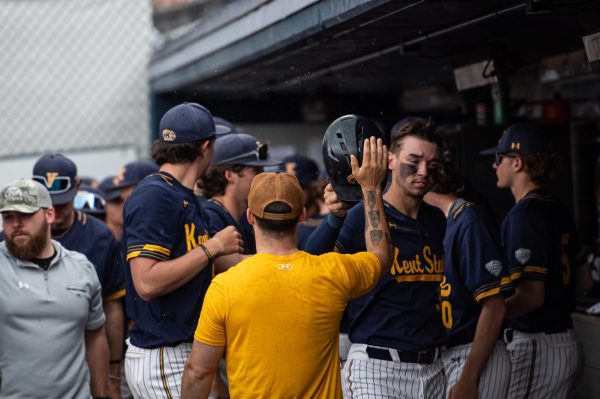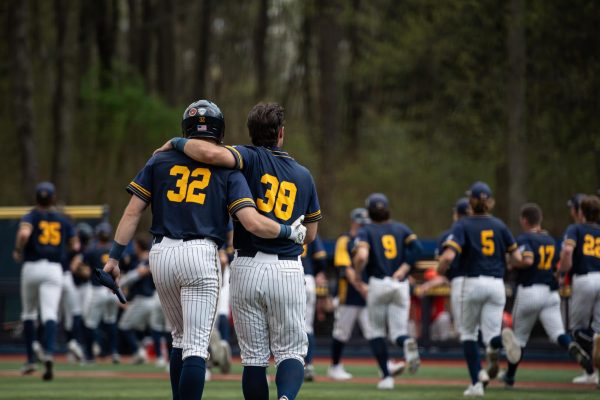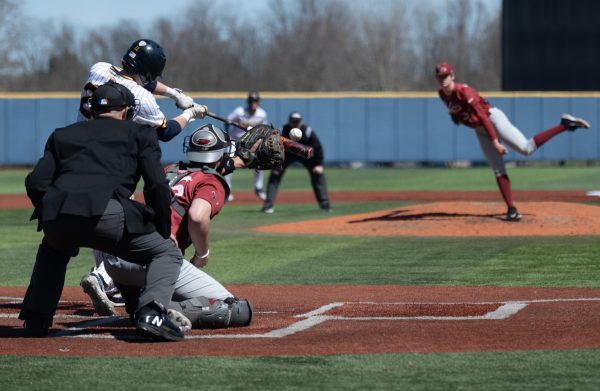Pay. Them.
March 1, 2020
There is a pay disparity between men and women in most work forces. White women earn 79 cents to a man’s dollar, asian women 87 cents, black women 65 cents and hispanic women 58 cents.
It is clear women are paid less than men, and it seeps into the sports industry too.
In the 2019 offseason, third baseman Manny Machado was up for free agency and reportedly signed a nine digit, multi year contract. Baseball writers followed the signing closely as new information was released every few days on teams courting Machado, the New York Yankees, Chicago White Sox, Philadelphia Phillies and eventually the team he signed with, the San Diego Padres.
The Padres signed Machado to a 10-year, $300 million contract. The 26-year-old can opt out of his contract after 2023, and will make roughly $30 million a year, not including the endorsements and brands he is signed to.
The highest paid female athlete has a different story than players like Machado, Trout and Cabrera. Female athletes are paid a lot less than men.
The highest paid female athlete is Serena Williams who makes $29.2 million, $25 million from endorsements and $4.2 from “prize money.” That means, Williams’ contract is $4.2 million when she wins tournaments. That is a $25.8 million difference Williams makes compared to Machado. Let’s repeat that. A $25.8 million difference in salary.
A salary cap exists in sports like the NBA, WNBA and the NFA. It means the league will cap how much a team can spend amongst all players in one year.
As the New York Times Katie Thomas reported, “Each team is limited to 20 players, with a salary cap of $150,000. (Jessica) Mendoza said players typically earn $8,000 to $50,000 a season, which runs from June through August.”
MLB doesn’t have a salary cap. If it did, players like Bryce Harper (13-year, $330 million with the Philadelphia Phillies) wouldn’t be able to sign the monster contracts they do.
Even in the NBA, the highest paid player is Stephen Curry, with a five-year $201.2 million contact with the Golden State Warriors. While the highest-paid female basketball player is DeWanna Bonner, with the Phoenix Mercury.
She makes $127,500. That’s a $201,072,500 difference.
The WNBA’s salary cap is a lot lower than the NBA’s. The NBA set its salary cap for the 2019-20 season at $109.14 million. Meaning, each team can’t spend more than that number in a given year. The WNBA set its salary cap for the upcoming season at $976,300.
That’s a $108,163,700 gender-based difference in how much the leagues can pay its players.
Female athletes should have the same air-time as male athletes. Girls and women deserve to watch athletes who look like them play on a national broadcast, get paid at the same rate and get the same coverage. By signing broadcast deals with ESPN, leagues will generate more revenue and can thus pay players fairly.
In 2013, the WNBA signed a broadcast deal with ESPN that goes through 2022, for $12 million. In a Sports Business Daily article, reporters Terry Lefton and John Ourand, said each team would receive $1 million. The NBA signed a $24 billion deal with ESPN and Turner for nine years.
Currently, the U.S. women’s soccer team is fighting for equal pay with their male counterparts. The women’s team have won four of the eight World Cup championships. The men’s team hasn’t won a World Cup, despite having been around since 1930. Yet the women are paid significantly less than the men’s team. In a Los Angeles Times article, Kevin Baxter reported each female player makes $4,950 a game, while each male player makes $13,166 a game, a difference of $8,216.
Female athletes play just as well as their male counterparts. We saw this when Billie Jean King defeated Bobby Riggs in a tennis match deemed “Battle of the Sexes.” We saw this when the U.S. women’s national team won its fourth title, while the men’s team have won zero. And we saw this when Williams won a golden career in grand slams in both singles and doubles. The first tennis player to ever do that.
The argument that women “aren’t good enough” is a sexist excuse to justify paying women less.
Amanda Levine is the sports editor. Contact her at [email protected].























